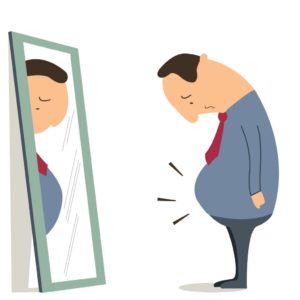Cosmetic surgery for abdomen reduction
The goal of cosmetic surgery is to improve a person’s appearance and, thus, self-esteem and self-confidence.
An inadequate diet, sedentary lifestyle or endocrine system disorders are all factors that can aggravate excess fat in the abdominal region. Similarly, the intense alterations suffered by skin during pregnancy or following abrupt weight changes can cause loss of elasticity in connective tissue or flaccidity. Excess fat in the abdominal region is not just a problem because it can look bad. In fact, having lots of fat in the abdominal area is strongly linked to diseases like type 2 diabetes and heart disease.
The choice of the type of abdominal cosmetic surgery ( abdomen reduction surgery ) depends on the specific problem of each person, such as the age and general health of the individual, the quality of the skin (firm skin without cracking or thin skin with abundant abnormalities), the amount of excess skin in the upper and lower abdomen, the amount of fat around the abdomen, and the flaccid or tightness of the abdominal wall (abdominal muscles).
The four common therapies for abdominal cosmetic surgery ( abdomen reduction surgery ) are :
- Abdominal Plastic Surgery (Abdominoplasty or Tommy Tuck)
- Liposuction
- Combine two methods
- Laser lipolysis
Abdominoplasty
Abdominoplasty, also known as Tummy tuck surgery, removes excess fat and skin and, in most cases, restores weakened or separated muscles creating an abdominal profile that is smoother and firmer. A tummy tuck is suitable for both men and women who are in good general health overall and are at a stable weight. It is best to be a non-smoker. Abdominoplasty is also an alternative for men or women who were obese at one point in their lives, and still have excessive fat deposits or loose skin in the abdominal area.
Abdominoplasty operations vary in scope and are frequently subdivided into categories. Depending on the extent of the surgery, a complete Abdominoplasty can take from 1 to 5 hours. A partial Abdominoplasty (mini-tuck Abdominoplasty) can be completed between 1 and 2 hours. Abdominoplasty is usually performed under general anaesthesia or under local anaesthesia with deep sedation.
Liposuction can sometimes be done at the same time as the Abdominoplasty.
Liposuction
Liposuction can be recommended instead of an Abdominoplasty for younger patients who have good quality, elastic skin and whose main problem is a localized excess of fat. A general anaesthetic is most commonly used, but treatment can often be as a day case. During the procedure, small incisions are made, excess fat is removed and the wounds are then closed. Some degree of skin tightening or shrinkage can be expected as well, but the results of liposuction can sometimes be unpredictable. Liposuction alone will have less effect than Abdominoplasty.
Laser lipolysis
Laser lipolysis is a minimally invasive procedure that uses heat from fiber-optic lasers at various wavelengths to melt body fat. This is a different process than liposuction, which involves removing fat from the body using vacuum suction. The added benefit of laser lipolysis is that it spurs the production of the protein collagen, making skin more taut. Laser Lipolysis consists of subcutaneous application of two types of laser power: one to dissolve the fat and the other to generate a skin tightening effect to define and flatten the abdomen.
Benefits of laser lipolysis:
- Faster and more comfortable recovery
- Reduced risk of bruising and swelling
- Skin retraction
- Local anaesthetic, outpatient procedure
Laser lipolysis is a localized fat deposit removal treatment that can also be performed on:
- Arms
- Legs
- Buttocks
- Face and neck


